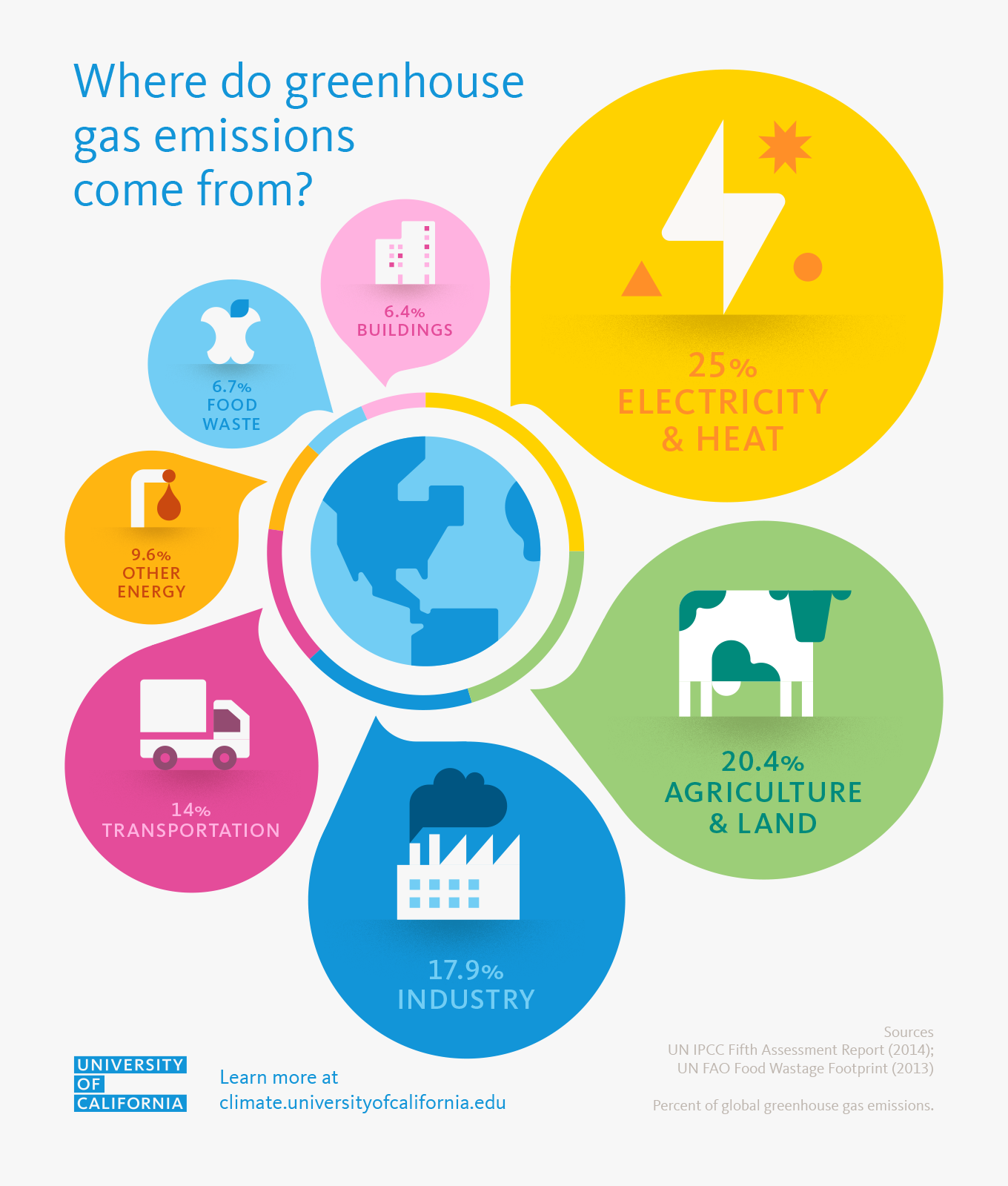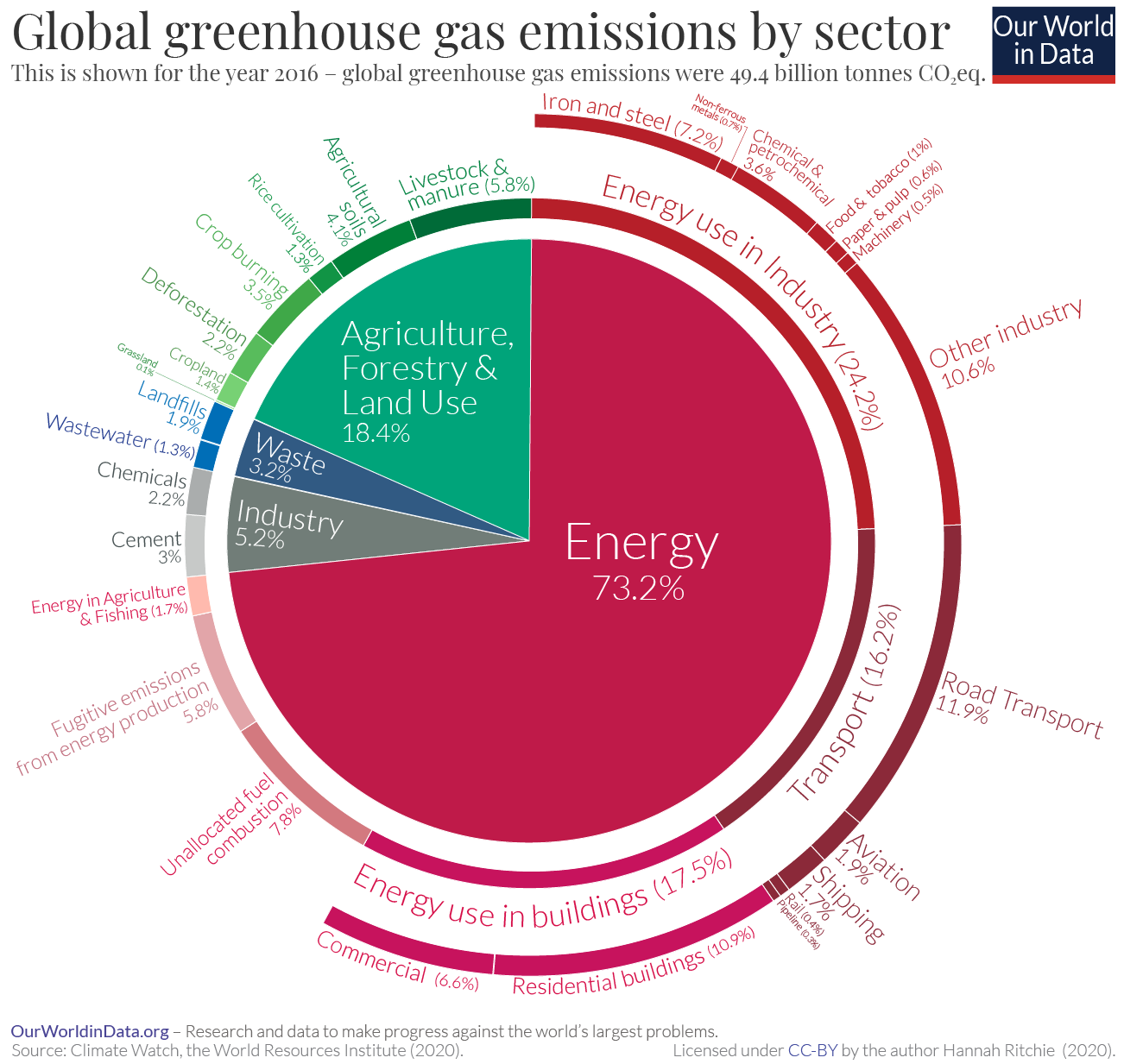Climate change is one of the most pressing issues of our time, and greenhouse gas emissions are one of the main culprits. But where do these emissions come from? In this blog, we’ll dive into the primary and secondary sources of greenhouse gas emissions and explore strategies for reducing them. Let’s get started!
Introduction to Greenhouse Gases and Climate Change
The term “greenhouse gases” refers to a group of gases that trap heat in the Earth’s atmosphere and contribute to global warming. The main greenhouse gases are carbon dioxide (CO2), methane (CH4), and nitrous oxide (N2O). As these gases accumulate in the atmosphere, they trap heat and cause temperatures to rise. This phenomenon, known as global warming, is leading to a host of climate-related issues such as melting glaciers, rising sea levels, and extreme weather events.
In order to reduce the effects of climate change, it’s essential to understand where greenhouse gas emissions are coming from. In the following sections, we’ll explore the primary and secondary sources of greenhouse gases and discuss strategies for reducing their emissions.
Primary Sources of Greenhouse Gas Emissions

The primary sources of greenhouse gas emissions are fossil fuel combustion, industrial processes, agriculture, and waste management. Let’s take a closer look at each of these sources.
2.1. Fossil Fuel Combustion
The burning of fossil fuels such as coal, oil, and natural gas is a major source of greenhouse gas emissions. When these fuels are burned, they release carbon dioxide into the atmosphere, which contributes to global warming. In fact, fossil fuel combustion accounts for more than 70 percent of total global emissions of CO2.
In addition to carbon dioxide, burning fossil fuels also releases other greenhouse gases such as methane and nitrous oxide. These gases are released directly from the combustion process, or they can be released from leaks in the fuel production and transportation process.
2.2. Industrial Processes
Industrial processes such as manufacturing, construction, and chemical production are a significant source of greenhouse gas emissions. These processes often involve burning fossil fuels, which releases carbon dioxide and other greenhouse gases into the atmosphere. In addition, many industrial processes release nitrous oxide, which is a particularly potent greenhouse gas.
2.3. Agriculture
Agriculture is another major source of greenhouse gas emissions. Livestock production, in particular, is a major contributor, as it releases large amounts of methane and nitrous oxide into the atmosphere. In addition, agricultural activities such as burning crop residues and clearing land for farming can release large amounts of carbon dioxide.

2.4. Waste Management
Waste management is yet another source of greenhouse gas emissions. Landfills, in particular, are a significant source of methane emissions. Methane is a powerful greenhouse gas, and when it is released into the atmosphere, it contributes to global warming.
Secondary Sources of Greenhouse Gas Emissions
In addition to the primary sources of greenhouse gas emissions, there are also secondary sources. These sources include deforestation, cement production, and methane emissions.
3.1. Deforestation
Deforestation is a major source of greenhouse gas emissions. When trees are cut down, they release their stored carbon into the atmosphere, which contributes to global warming. In addition, when forests are cleared for other uses such as farming, this can also lead to increased emissions.
3.2. Cement Production
The production of cement is another source of greenhouse gas emissions. Cement production is a chemical process that releases large amounts of carbon dioxide into the atmosphere. In addition, the manufacturing process also releases other greenhouse gases such as methane and nitrous oxide.
3.3. Methane Emissions
Methane is a powerful greenhouse gas, and it is released from a variety of sources. For example, landfills and livestock production release large amounts of methane into the atmosphere. In addition, methane is also released from leaks in natural gas pipelines and other industrial processes.
Global Greenhouse Gas Emissions
Global greenhouse gas emissions have been steadily increasing over the past few decades. In 2018, the global emissions of CO2 reached a record high of 37.1 billion metric tons. This is an increase of 2.7 percent from the previous year, and it is the largest annual increase since 2011.
The primary sources of greenhouse gas emissions are responsible for the majority of global emissions. Fossil fuel combustion accounts for more than 70 percent of total emissions, while industrial processes, agriculture, and waste management account for roughly 15 percent, 10 percent, and 5 percent respectively.
Strategies for Reducing Greenhouse Gas Emissions
In order to reduce the effects of climate change, it is essential to reduce global greenhouse gas emissions. There are a number of strategies for doing so, such as improving energy efficiency, switching to renewable energy sources, and reducing deforestation.
Improving energy efficiency is one of the most effective ways to reduce emissions. By using energy more efficiently, we can reduce the amount of energy needed to power our homes, businesses, and industries. This, in turn, reduces the amount of fossil fuel combustion and other activities that release greenhouse gases into the atmosphere.
Switching to renewable energy sources is another important strategy for reducing emissions. Renewable energy sources such as solar, wind, and geothermal generate electricity without releasing any emissions into the atmosphere. By investing in renewable energy sources, we can reduce our reliance on fossil fuels and decrease global emissions.
Finally, reducing deforestation is another effective way to reduce emissions. By protecting forests, we can keep their stored carbon out of the atmosphere and reduce global warming. In addition, protecting forests can also help preserve biodiversity and provide other benefits to the environment.
Top 5 Main World Social Associations Focus on Greenhouse Gas Emissions
The global challenge of managing Greenhouse Gas Emissions (GHGs) has become a major focus for many of the world’s social associations. As such, many organizations have put forth their efforts to reduce and manage GHGs in order to promote a more sustainable future. Here are the top 5 main world social associations that are focused on managing GHGs:
The first of the top 5 main world social associations is the United Nations Framework Convention on Climate Change (UNFCCC). This organization has been at the forefront of efforts to reduce GHG emissions, particularly through the negotiations of the Paris Agreement. The UNFCCC works to bring together governments, industry, and civil society to work towards reducing emissions and mitigating the impacts of climate change.
The second social association is the Intergovernmental Panel on Climate Change (IPCC). The IPCC is a scientific body which assesses the risks of climate change. It provides governments with scientific information to facilitate informed decision-making on climate policy. The IPCC also works to develop strategies to reduce GHG emissions and increase resilience to climate change.
The third association is the Environmental Defense Fund (EDF). This non-profit organization works to develop and implement solutions to reduce GHG emissions. It is involved in research, policy advocacy, and public education to reduce emissions and promote renewable energy.
The fourth social association is the Carbon Disclosure Project (CDP). This non-profit organization works to increase transparency and disclosure of corporate GHG emissions. Companies are encouraged to disclose their GHG emissions and strategies to reduce them, and the CDP provides resources to help companies do so.
The fifth social association is the International Energy Agency (IEA). This organization works to promote energy security and environmental sustainability. It provides policy advice to governments to help them reduce GHG emissions, improve energy efficiency, and increase the use of renewable energy.
These are the top 5 main world social associations that are focused on reducing and managing GHG emissions. Through their efforts, they are helping to promote a more sustainable future and mitigate the impacts of climate change.
You can also find Sqm Club as a non-profit organization dedicated to reducing carbon dioxide emissions and improving air quality.
Conclusion
In this blog, we explored the primary and secondary sources of greenhouse gas emissions and discussed strategies for reducing them. We learned that the primary sources of emissions are fossil fuel combustion, industrial processes, agriculture, and waste management. We also discussed secondary sources such as deforestation and cement production. Finally, we explored strategies for reducing emissions, such as improving energy efficiency, switching to renewable energy sources, and reducing deforestation.
Greenhouse gas emissions are one of the main contributors to climate change, and it’s essential that we take steps to reduce them. By understanding the sources of emissions and implementing strategies for reducing them, we can make a positive impact on the environment and reduce the effects of climate change.
Take action today and reduce your own emissions by switching to renewable energy sources and improving your energy efficiency. Together, we can make a difference and protect our planet for future generations.


